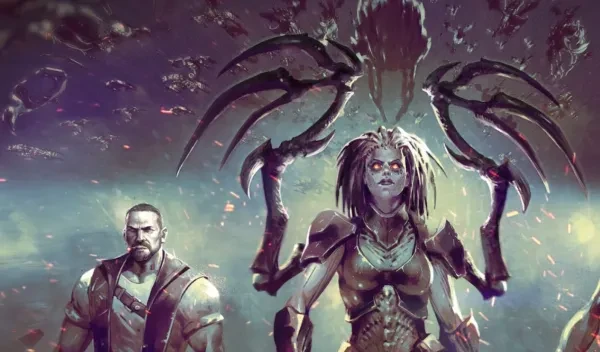
The strategy and retro genres go together like peanut butter and jelly. Some built the foundation of popular strategy games today, and others were born into genres that would eventually struggle, needing the community to help keep them alive. But even if they’re part of a familiar genre or not, most of these games can scratch a unique itch with ideas and themes that have aged extremely well. Many of these games would be difficult to sell in today's market, and because of the developers willing to dive into an industry that was still young and growing, there are some designs that can never be recreated. Some of these games influenced gaming, and others are just good damn games.
10. Shogun: Total War (2000)
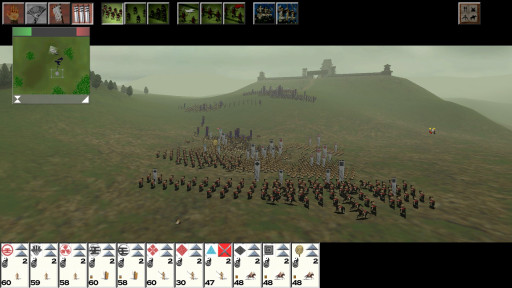
Shogun: Total War gameplay: https://www.youtube.com/watch?v=qI6Bakxq-do
Battle in the chaotic Sengoku period as one of the many clans trying to gain control over Japan during civil war.
Being one of the lesser-known games in the series, the first Shogun was a strong start for Total War. In a risk style game like the others, you lead a faction for control over a sprawling map. But instead of using dice to decide the battles, you go into the battlefield yourself to control the movements and attacks of your soldiers. This first game has a simple “rock, paper, scissors” strategy for its battles with the cavalry , ranged, and infantry units, respectfully (with a couple exceptions); this makes the battles less intimidating for new players.
Shogun 1 also included diplomacy with rival clans, alliances and ceasefires, with rare cases of events that allowed you to trade arms with Christian nations. The hardest pill to swallow for this game is its UI and graphics, which have not aged well and were criticized even at the time. But getting used to this leads to a stylistic, solo real-time strategy that immerses you in the time period with its appropriate Japanese artwork and classical music.
Shogun 1 Best Known For...
- Formula of a series: it built the formula for a series that continues even after 20 years
- Tactical battles: creating impressive RTS battlefields to control large armies
- World map: gave the players a large map to conquer and control, changing as you played the game
9. Age of Mythology (2002)
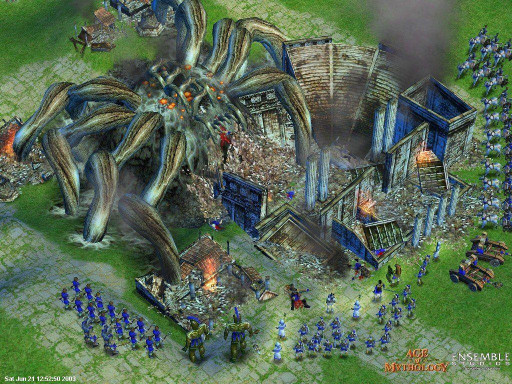
Age of Mythology gameplay: https://www.youtube.com/watch?v=4I9YFelMWMU
A sequel to the well known Age of Empires series, enter a world where civilizations and their gods battle each other.
Mythology has more of an emphasis on its units for each civilization than the first two AOE games; unit trees leading to creatures and deities, towering over basic units in both size and strength. You can control the Greeks, Egyptians, Norse, and Atlanteans, their armies built from the history and myths that make them so prevalent in our culture today. Minotaurs, mummies, valkyries, Pangu (a Chinese deity), and giant Lava Golems are only a few of the legends you can take control of to (hopefully) tear apart your enemies.
The gameplay feels similar to the older AOE games, but moved to a 3D engine with smoother animations. The game is also faster paced, which might appeal to certain RTS players.
AOM Best Known For...
- 3D engine: was a very good-looking and smooth RTS game when it released
- Mythical setting: the setting with gods and cultures was a nice departure from the familiar medieval setting of AOE
- Unique factions: each faction has handfuls of units that are unique to that faction
- Engaging campaign: the campaign is extremely well done for an RTS that solo players can delve into
8. Command & Conquer: Red Alert (1996)
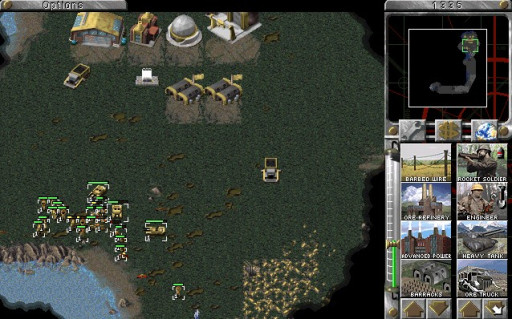
C&C: Red Alert gameplay: https://www.youtube.com/watch?v=DrtodXOIeW8
Go back to a classic of the RTS genre that,upon its release, created several milestones that future games needed to follow to survive.
The presentation of Red Alert is absurd with insane cutscenes and a deadly simple premise; but technically crafted to be one of the most enjoyable RTS games to this day. Instead of needing to scroll through endless trees of units that are basically the same, you have handfuls of units that you can easily create, getting into the action immediately. With simple knowledge of military terms like ‘barracks’ and ‘war factory’, a beginner can quickly grasp the meaning of each building within a few minutes.
It was an RTS that built its skill ceiling on the concept of “easy to learn, hard to master,” bringing back newer and older players to this day. And one element that no one will be able to forget after playing is the soundtrack; ‘Hell March’ is one of the famous songs, but it would be wrong to forget the entire OST, which has a good variety of styles and tones to rage war with.
Red Alert is Best Known For...
- Refined gameplay: created an RTS that was easy to get into and incredibly fun, that many other games in the same field needed to follow
- Epic soundtrack: the soundtrack is still a treat to listen to, and fits incredibly well with the gameplay
- Insane style: had an unforgettable alternate-history style that goes to almost ridiculous lengths
7. Civilization III (2001)
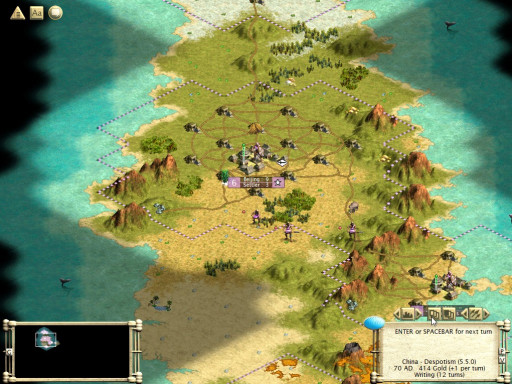
Civilization III gameplay: https://www.youtube.com/watch?v=a-Ts-uaZDn4
Civ 3 developed the graphical style of the important 4X series, improving the UI and adding several gameplay elements.
Civilization is a well known series today, with each one improving on the last (for the most part), meaning that Civ III has been mostly forgotten with the sixth installment. But it was a good upgrade from the second, leaning into a better cartoonish graphical style that is still with series today, instead of pixels or boxes. The user interface was also greatly improved, making it easier to use and learn; that includes an upgraded Civilopedia.
Animations to the units were a massive improvement, and it also had an option of a ‘city view’, which was a little touch, letting you see the development of your cities in a more natural looking way.. There were improvements on the diplomacy in Civ 2 as well.
Civ 2 Best Known For...
- Creating Civ’s style: was the first civ game to give it distinct graphical style
- Adding animations: created smooth animations that made the game a lot easier to look at
- City view option: let you view your cities as little art pieces that grow as your civ does
6. Master of Orion 2: Battle of Antares (1996)

MoO 2 gameplay: https://www.youtube.com/watch?v=ZHIgLhqZalI
Experience the predecessor tothe famous Stellaris game, which upgraded the foundation of the open-space 4X genre.
Masters of Orion 2 was the best space 4X game of its time, and today it has aged well as a very well done one. Each race has different effects or specifications; the Triliarians are trans-dimensional dictators, the Klackons are efficient insect people, and humans are (somehow) democratic, charismatic diplomats. The races are given about a paragraph or two of their history and how it connects with special effects or bonuses (with a right click). After choosing your race, you are shown a familiar screen of a 4X, star-map goodness, with helpful tips to guide you through the specifics of the game (just another right click) ).
It has surprisingly good art; you are able to see your colonies on planets directly, and during events you see short animations of your race’s chancellor. There is even an option to use tactical battles during ship conflicts, where you can control the movements and attacks during them . Finally, you can customize a race before a game, and the ships during the game to min-max or just mess around with the game’s system.
MOO2 Best Known For...
- Space 4X jem: it was hard to find another game in the genre back then that was as clean and cohesive
- Informative UI: there is info for every single screen of the game with a right click, on top of having its own info screen
- Intuitive systems: the economy, diplomacy, combat, and every other system in the game is effective but also simple and without clutter
5. Age of Empires II (1999)
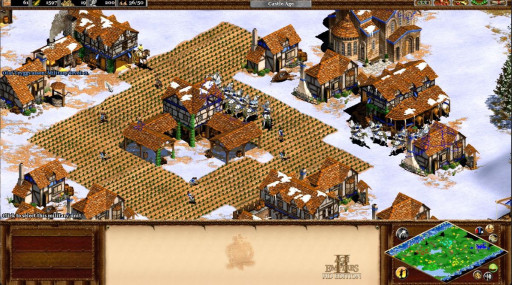
AOE II gameplay: https://www.youtube.com/watch?v=NLUB0DnT4pk
For the decades it’s existed, AOE II has stayed as a staple in the genre.
Age of Empires II overshadowed the first game to the point where people began forgetting it existed. Even the recent two entries were unable to grab hold of the player base, despite upgrades in technology and the team having better experience. AOE II was just too good, and with its medieval theme done so well, and mixing in the city building elements, it quickly became a classic. The mechanics of the game are extremely complex, even with its simple looking, pixel-based presentation.
But graphically, Ensemble Studios was on their A-game; the art outliving many other RTS’s that used the same style. There is also so much to do; the custom games give it a lot of replayability. Age of Empires II will continue to age like a fine wine, and if another remaster comes out in the next decade, people probably won’t complain (unless it’s lazy).
AOE II Best Known For...
- Replayable: There are so many ways to play this game and the developers gave you the tools to do so
- City-builder elements: you buildings aren’t just blocks with a single function, but are pushed to be built aesthetically and functionally within the medieval theme
- Timeless gameplay: because of its complexity, AOE II will always feel fresh, with many players discovering something new each time they play
4. StarCraft: Brood War (1998)

StarCraft: Brood War gameplay: https://www.youtube.com/watch?v=7jozHbC_DQc
Coming out only a year after the main game, Brood War advanced an already popular game into RTS history.
StarCraft 2 and each of its expansions were immensely popular, being one of the most popular esports at the beginning of the 2010s, but many players would say that Brood War was the gold standard for the series. Veterans praise the game for both the campaign’s story and writing, and the complex and engaging gameplay; it also updated the game in several aspects, like balancing issues and adding units.
Every unit in the game has a unique purpose, and each enemy unit has specific counters; with a competent remaster, you can see all the fleshy and bubbly goodness in higher definition. Brood War is still worth checking out today.
Brood War Best Known For...
- Story: Not just the campaign, but the writing is very well done for an RTS; if you’re willing to learn the game, it can be an incredible journey
- Competitive Multiplayer: had great pvp games for the RTS genre, leading to a strong esports presence for the series in the future
- Interesting setting: the 40k inspired world proved to be a great setting for an RTS game
- Balancing: Brood War improved upon the original game like every competitive game does today
3. Warcraft III: Reign of Chaos (2002)
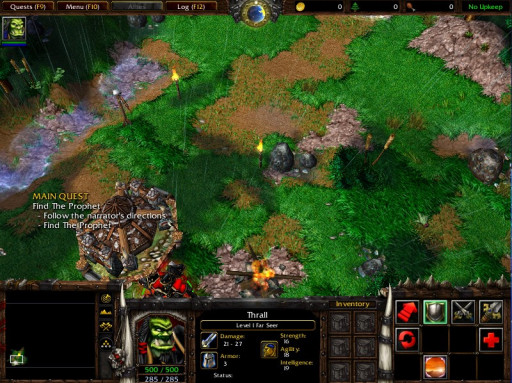
Warcraft III gameplay: https://www.youtube.com/watch?v=FeDCsUx3GYI
Never will you find the prophet, as the narrator’s directions were all false.
Rating Reign of Chaos and Brood War against each other is very difficult, but no one can deny the former’s legacy on the gaming industry as a whole. A living world was sparked by Warcraft III’s influence: lore, books, fan theories, WOW, but unlike the chaos that is the World of Warcraft, Warcraft III was an extremely streamlined and focused game. However, the game didn’t just impact a single genre but led to the creation of others. Custom maps kept the game alive for the longest time and paved the way for MOBAs’ explosion in popularity, and several other games that wouldn’t have become popular without them .
The game itself puts the player into an RPG world with many memorable characters and settings used in the universe today. Unfortunately, unlike Brood War, there isn’t a competent release online, and new players interested in jumping into the original are out of luck.
Warcraft III Best Known For...
- Custom games: an impressive fan-base created a ton of unique game modes with the game’s engine
- RPG elements: for a RTS, the game had an impressive way of bringing you into the world, guiding you through the characters stories
- World building: the game built most of the foundations that would become WOW, a world that would have to last for decades
- Undying style: still used effectively (?) today, the graphical and thematic style of this game has been used in several games of Blizzard and the general community
2. Heroes of Might & Magic III (1999)
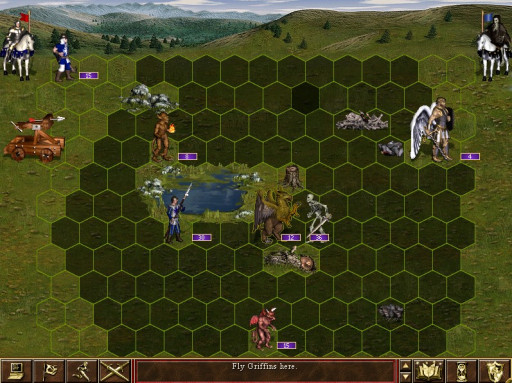
HoMM3 gameplay: https://www.youtube.com/watch?v=vdJRKWfzpuA
Play a game that defines the feeling of nostalgia for everyone who played.
It would be unfair to compare the other games on this list to HoMM3’s replay value: there are several campaigns that have several maps,dozens of scenarios with their unique gimmicks and ideas, as well as multiplayer in these scenarios, and finally the choice of having a randomized map (you can also change the settings). The management, mixed with the exploration and combat creates an engaging experience that takes time to get used to. The gameplay is like a board game that has a 70+ page instruction booklet; coming across a new rule or feature leads to intrigue or frustration.
Aside from the gameplay, the art is clean and the animations are beautiful, competing with games today. The fan-base is humble and tight knit; you’ll be welcomed.
HoMM3 Best Known For...
- Endless content: you’ll probably get sick of this game before you run out of things to do, the content is quite intimidating
- Mix of genres: it uses genres together in an original way
- Randomizer: can create randomized maps for new challenges
- Addicting: homm3 addicts have been struggling for generations
1. X-Com: UFO Defense (1994)
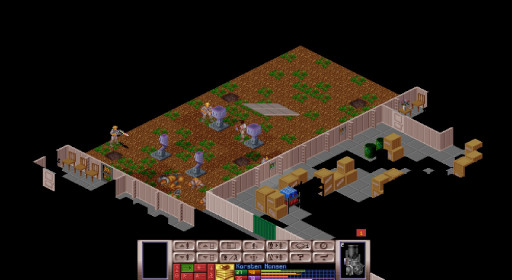
HoMM3 gameplay: https://www.youtube.com/watch?v=pX0Cm3N_n6k
Being the oldest (and probably clunkiest) game on this list, X-com is one of the best retro strategy experiences you can have, if you are willing to suffer and bleed a little.
X-com (the dash is important) is completely overshadowed today by itsspiritual successor, XCOM. X-com allows you to control almost every aspect of the defense against an alien invasion, to the level similar to a sandbox. It is not forgiving; you need to learn what ammo to use, what research to go for, where you place the rooms of your base, and if you screw up even a little bit, your men and the civilians you’re trying to save will be probed and tortured for all eternity (or at least until they die).
The base building and management are just the tip of the iceberg. Getting into the turn-based combat, it becomes even more brutal. The pulsating music may seem cheesy at first but after a few battles, you listen carefully, hoping you see the aliens before that sickening plasma sound comes from the darkness, sniping poor old Mick Campbell out in the front of the skyranger,in which he diesa horrible pixel death in front of his comrades, who struggle to get by his body and they run into more fire.
Anyway, this game gets intense, and it can be an extremely engaging experience if you're able to struggle through trial and error. After several earths go up in flames, you finally and satisfyingly win the game (potentially).
X-com Best Known For...
- Quite terrifying: if you really get into a run, you can get quite worried about encountering something that will completely wipe you out
- Random level generator: the battle maps and events are randomized, each run is different (yes, think rouge)
- Distractible terrain: this early game has an impressive destruction system, which you can use to gain a tactical advantage
- Sandbox elements: you can name characters, build bases anywhere, developed equipment however you want; there’s a lot of freedom
